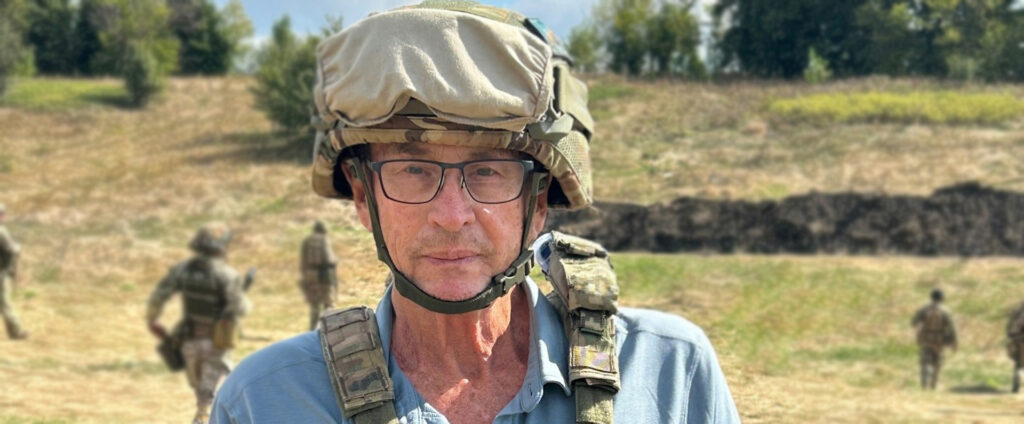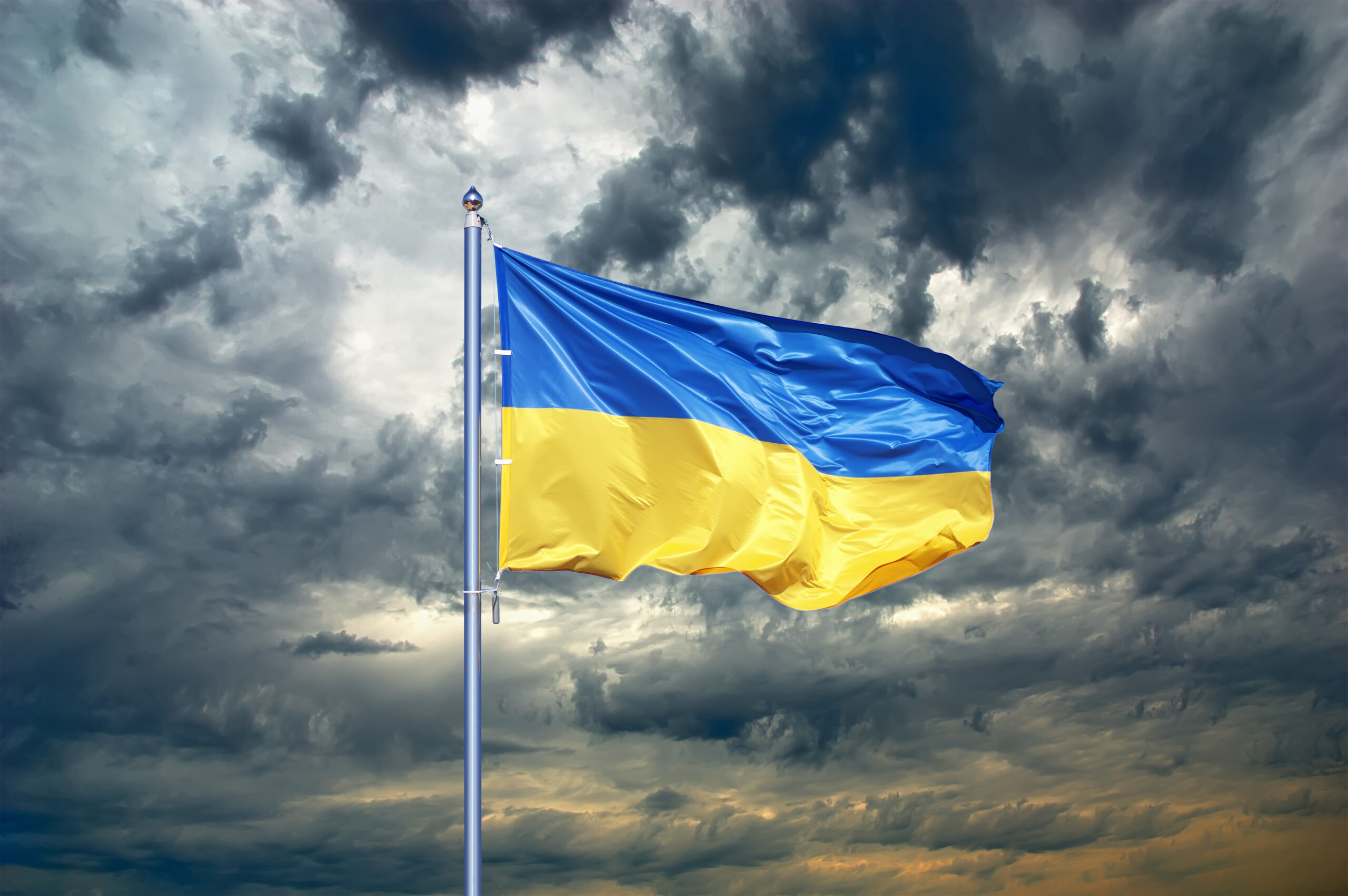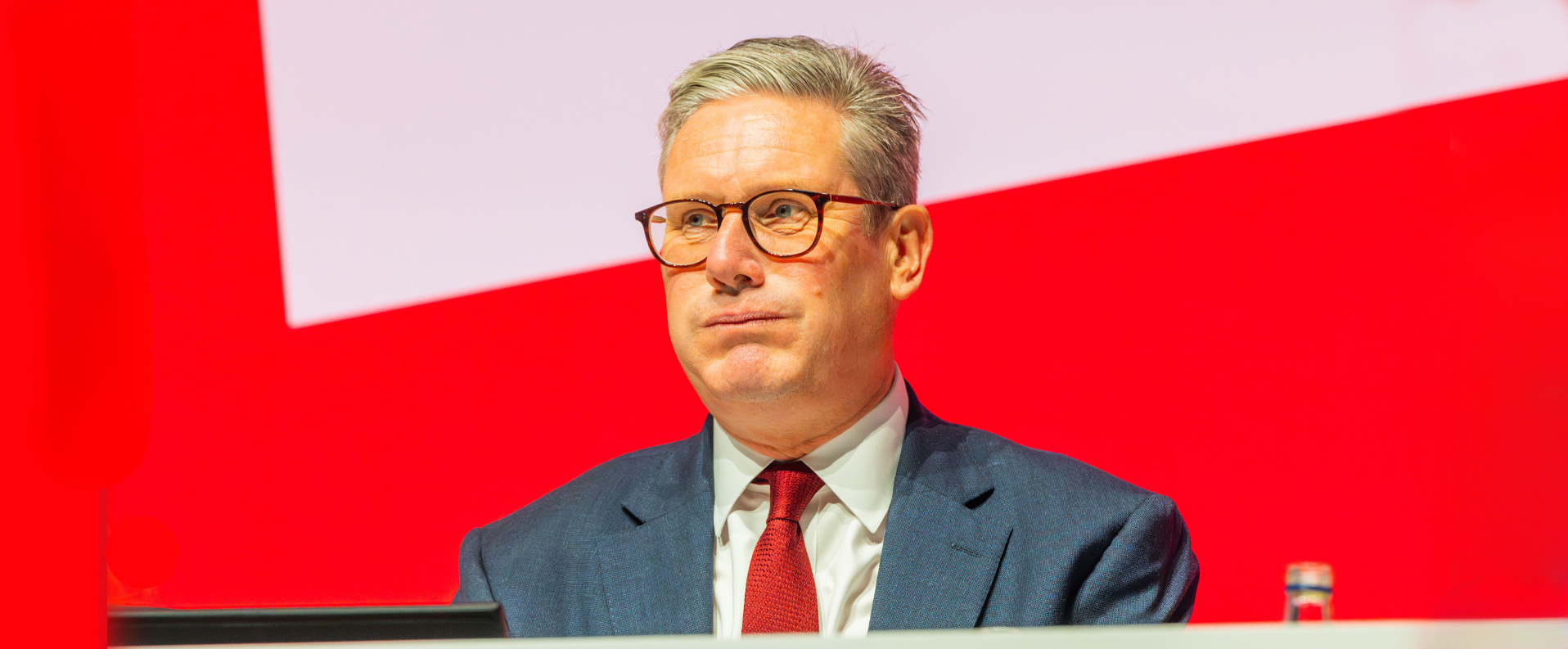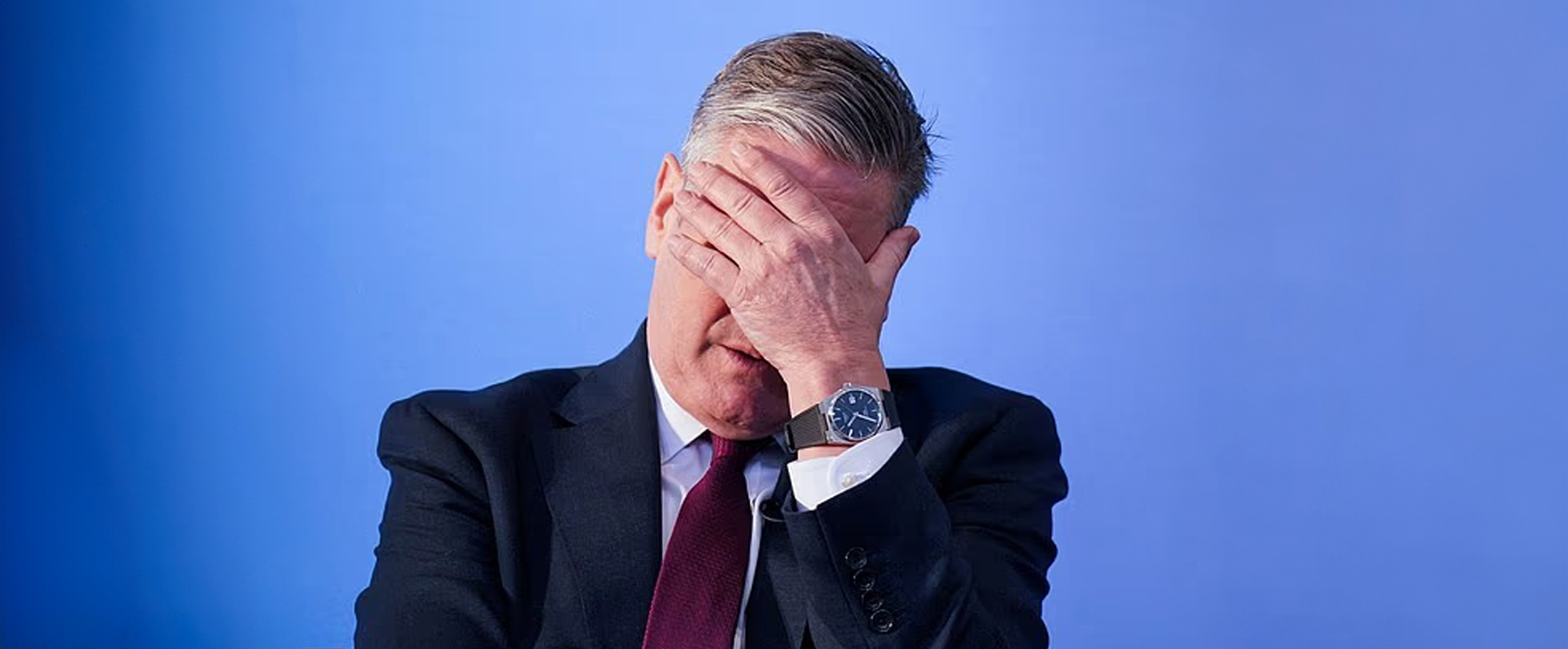
Published in The Mail on Sunday on 10 September 2023.
Lord Ashcroft was last week given exclusive access to a secret underground command centre where he saw how the technology we fund is aiding Ukraine’s fightback. But, he argues in this dramatic dispatch, the West should be doing more.
The atmosphere in the command bunker was tense. On six large electronic screens at the far end of the room, there were clear images of a battle raging some 15 miles away.
On a sunny afternoon, the lives of 60 men from the menacingly named Tsunami Assault Regiment were at risk as they fought their Russian enemy in the front-line village of Klishchiivka in eastern Ukraine, once home to 500 residents.
At times the two sides, crawling through the rubble of shattered buildings, were firing at each other from a distance of only 50 metres.
In some ways, the battle resembled a scene from the Western Front more than a century ago, or from the Battle of Stalingrad in the Second World War – except for one crucial element: dozens of drones were streaming live, near-perfect images of the battlefield and surrounding area, enabling Ukrainian commanders to plot tactics and troop movements from their secret hide-out.
With his eyes pinned on the six screens, Lieutenant-Colonel Olexandr Gostyschev, the commander of the regiment, was surrounded at his desk by more than half a dozen experts advising on military planning, intelligence, air defence, drones and signals.
At one point the room fell silent, as an image – provided by a single drone flying at a height of exactly 114 metres – appeared on one of the screens. It showed a Ukrainian mortar attack on a building in Klishchiivka where Russian soldiers were housed. The subsequent explosion indicated a direct hit and the likelihood was that everyone inside was either dead or injured.
At all times, Lt-Col. Gostyschev, muscular, barrel-chested and bearded, was calm and authoritative, delivering orders over a secure internet service or an equally safe mobile-phone line.
I visited Ukraine last week for the fourth time since its full- scale war with Russia began on February 24, 2022. As a passionate and trusted supporter of Ukraine, I was given exclusive access to sensitive areas close to the front line.
During a momentary lull in the fighting, I asked the 40-year-old Gostyschev if he felt under pressure making life-and-death decisions affecting his 2,000-strong regiment of volunteers, mainly former police officers from the Odessa region in southern Ukraine.
‘At times, it is tough, but it is my duty to take responsibility. I do all I can to keep my men alive,’ he said in a sombre tone, speaking through an interpreter.
He told me that in the last three months of fighting in and around the city of Bakhmut, his regiment had taken some “heavy casualties”.
Total casualties for the war are not disclosed by Ukraine, but the nation is thought to have had some 70,000 soldiers killed and up to 140,000 wounded. Russia’s casualties are almost certainly twice as high.
However, since the counter-offensive against the Russians began three months ago, the Tsunami Assault Regiment has typically been advancing at a rate of 75 metres a day.
Part of this slow-but-sure progress has come from technological advances in the world’s first drone war. The two sides are using reconnaissance and attack drones on an unprecedented scale – which is why Britain has supplied Ukraine with hundreds of both kinds.
Senior sources told me that Ukraine is using 2,000 drones every day along and behind the 700-mile front line. It also appears to be using them more effectively than their Russian enemy.
If deployed astutely, a single drone costing only a few hundred pounds can wipe out military hardware on the ground worth millions. Longer-range Ukrainian drones have increasingly been able to hit targets within Russia itself.
More than 18 months after the war began, when Russia attempted a full-scale invasion of its neighbour, events have now reached a crucial stage.
Last weekend Ukraine finally made significant progress, punching through Russia’s first defensive line in the southeastern Zaporizhzhia region.
However, there are indications that, in the run-up to next year’s US presidential elections, support for the war among the two main American political parties is waning because of its massive cost.
Meanwhile, as the battle for Klishchiivka continued, I left the command bunker to travel to a secret location where I interviewed a soldier who only the day before had been presented with the Order of Merit gallantry medal by President Volodymyr Zelensky.
As a result I am able to tell the story of a dramatic firefight that took place just nine days ago.
At around 8am on September 1, 37-year-old Lieutenant Vitaly Nekrasov and five other men from the Tsunami platoon he commanded attacked an enemy position, believing it was held by only three Russians.
But their intelligence proved to be wrong and, as the soldiers advanced, they were ambushed and fired upon from four different enemy positions. Some of the rifle fire came from less than ten metres away.
As the two sides fought at close quarters for some 15 minutes, one of Lt. Nekrasov’s soldiers was killed and the four others were injured. Short of ammunition, they were eventually forced to retreat as a bigger Russian force advanced to finish them off.
Unbeknown to the Russians, however, five other men from the Tsunami platoon were in support and they opened fire on the advancing enemy and even took two Russian soldiers prisoner as they leapt from a foxhole.
By this point, enemy artillery fire was exploding from behind Nekrasov and his men. Then, as they tried to continue their retreat, an exploding shell set fire to their dead comrade.
‘The burning body created a lot of smoke and helped with our retreat,’ said Nekrasov. ‘His death saved our lives because after an hour and a half of fighting we pulled out without any further casualties.’ He was refused permission to retrieve his friend’s remains because it would have endangered more lives.
For his gallantry in saving most of his platoon, Lieutenant Nekrasov was awarded not only the Order of Merit – similar to our Military Cross – but also the highest-ranking bravery medal for a police officer. (Like many of his comrades, he served in the police before joining the army last year.)
As darkness fell, I returned to the front-line command bunker to discover an air of sadness had descended on proceedings. Later that afternoon, while the Ukrainians were rotating their soldiers, a Russian ‘kamikaze drone’ (which has the ability to loiter around until a target is located) had struck a soft-topped vehicle, killing one Tsunami serviceman and injuring three more – one of whom suffered a very major wound to his lower body.
Furthermore, reports had also come through of an atrocity in the small city close to where I was staying that night.
A missile attack on Kostyantynivka in Ukraine’s Donetsk region had killed at least 17 people, including a child, and injured dozens more. The explosion took place on a busy market street in the middle of the day.
Late that night military sources showed me a short but harrowing video captured by a soldier moments after the blast. It showed dead and dying civilians in front of burning buildings, with the crackling of live electricity wires drowning out the human screams.
For the soldiers, it was just another day in this brutal war. For me, it was deeply upsetting that Russia could seemingly target civilians in such a callous way.
That night I stood in the darkness outside our ‘safe house’ near Kostyantynivka as the sound of crickets mixed with the noise of outgoing Ukrainian artillery fire on the front line less than 15 miles away. During a late supper with three experienced Tsunami soldiers inside the house – its windows blacked out with plastic bags – the dull thud of the incoming fire was so much louder and our two-storey building shuddered.
‘Don’t worry. It is in the hands of the gods [who lives and dies],’ joked Sergiy Tetyukhin, who accompanied me for two days around the front-line positions.
The next morning, there was more grim news: three more Tsunami soldiers had been seriously wounded in fighting overnight.
I was then driven across beautiful countryside with lakes and fields of sunflowers on both sides of a bumpy road. After an hour we reached a secret location off a dirt lane – initially blocked by a flock of geese – where I watched as 50 Tsunami soldiers, new and experienced alike, honed their shooting and assault skills at a training camp.
Four-man assault teams were shown the best way to clear an enemy trench using hand-grenades followed by rifle fire. Nearby, other men were using a rifle range for close-combat target practice.
Two days earlier, outside an Italian restaurant close to the centre of Kharkiv, Ukraine’s second city, I had met with three members of the 1,800-strong Kraken Regiment. These are volunteer fighters, mainly with military experience, who since the war began have done a variety of work: training civilians in weapon use, carrying out vital reconnaissance work – and fighting on the front line.
The men, who gave only their nicknames of ‘Scar’, ‘Wheel’ and ‘Ginger’ were all quietly tough, bearded, tattooed and committed to defending their homeland. They also shared a hatred of President Putin and Russian aggression.
Speaking through an interpreter, Scar, 26, a junior lieutenant, said that he is motivated by a desire to protect his wife and children, and to avenge the deaths of many of his comrades.
Yet, wearied by months of fighting and expecting the war to last for years, he added: ‘Russia has killed a lot of my friends and I can’t live with the thought of them taking over my country. But, because there has been so much death, we can never talk now of a ‘victory’. When the war is over, there can be no celebrations. We have all lost so much that all we will do is go home and lay on our beds.’
In the city of Kramatorsk, some 20 miles from the front line, I met Commander Yurri Fedorenko, 32, a decorated soldier who told me he felt ‘energised’ that the war was starting to turn in Ukraine’s favour. But, while he was grateful for the West’s help, he made an impassioned plea for key military hardware to be supplied more quickly once it’s been pledged. ‘By the time the equipment arrives months later, the Russians have already thought through how to deal with it,’ he said.
My trip finished at the two-day Yalta European Strategy meeting in Kyiv to debate Ukraine’s future. On Friday President Zelensky told delegates: ‘It is important that our warriors are advancing and that we have the initiative on our side.’
But he also noted: ‘The war is slowing down. We recognise this fact. All processes are becoming more complicated and slower: from sanctions to the provision of weapons.’
Nobody knows how long the war will last. Some Ukrainians believe it will be for at least a decade if Putin remains in power. Most fear the fighting will continue until at least 2025.
Yet, having spent a week in Ukraine, I can report that the determination of the nation to repel the Russians beyond their borders – including Crimea and other land annexed in and after 2014 – is stronger than ever.
However, Ukraine needs its support from Britain and the other countries of the West more than ever too – and its allies, including the US, must not waiver. Not only do we owe it to the courageous people of Ukraine to continue, and even increase, our support in the shape of aid, weapons, intelligence and training; but we should also remember that Ukraine winning the war represents the best chance of toppling President Putin and the threat he poses to all Western democracies.
Read this article on:
DailyMail.co.uk


